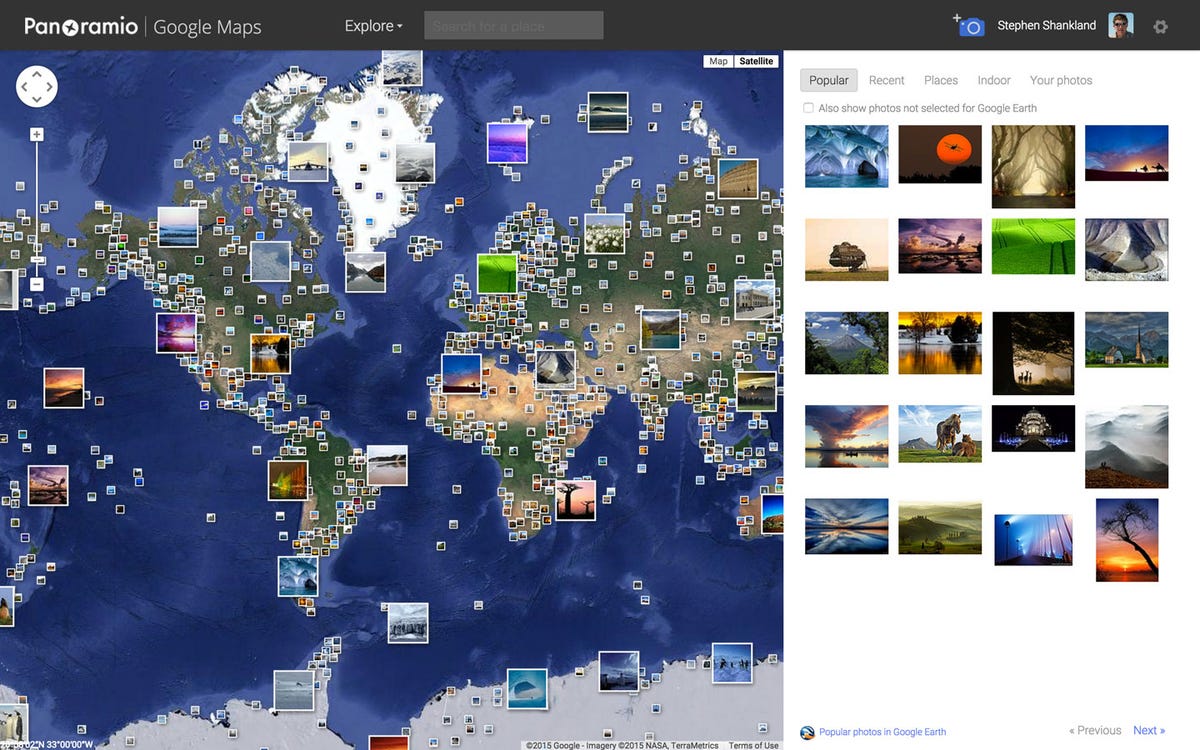
Screenshot by Stephen Shankland/CNET
Google is no longer a small, nimble company able to change rapidly, but apparently the wrath of 10,000 people can be enough to shift the Internet behemoth’s direction.
It took eight months of pressure, but Google this week backed off of a decision to scrap Panoramio, a site to share location-tagged photos that can be browsed using a map-based interface.
The about-face illustrates a downside to becoming a tech titan. Google’s large user base, strong brand and global presence gives a big boost to new projects, but when it’s time to change course, Google just can’t be as agile as a start-up.
In September, Google announced its plan to phase out Panoramio in favor of a new Google Maps Views service that lets people upload photos and explore them on a map. But Panoramio members objected that community features like favorites, comments and forum posts would be wiped out. And Panoramio’s co-founders, who had left Google, attracted 10,514 signatures on a petition to get Google to rethink its decision.
On Tuesday, Google told those loyalists that, although it won’t necessarily keep Panoramio around forever, it will come up with a better way to meet the enthusiast and professional photography needs of its community.
“After listening to community feedback about the future of the platform, we’re pleased to let you know that there won’t be any immediate changes to Panoramio,” said James Therrien, a member of Google’s geographic technology team, in a forum post. “Instead of aligning the community with Views, we’ve gone back to the drawing board to work on a more integrated solution that supports you and your content directly within Google Maps.”
Panoramio fans greeted the announcement with glee.
“I can imagine that it was a tough task to make it happen, so a big shout-out for all of the Googlers who strived to get to this point,” Panoramio user Andre Speek said in a response.
Google declined to comment beyond its forum posting.
Panoramio was founded in 2005 as a way to share photos that have been “geotagged” with location data, and Google acquired it in 2007. It’s not as well known or as widely used as competitors like Yahoo’s Flickr, and it’s not as heavily promoted as the new Google Photos service, but Panoramio is important to Google. Google Maps uses many of its more than 80 million photos to give richer real-world views and aide online exploration.
Google had hoped to shift Panoramio photo sharing to its newer Views service on Google Maps. The problem was that it was tough to marry Views’ consumer-oriented interface with what the Panoramio community liked, Therrien said.
“We strive to balance what makes sense for you, the pro or enthusiast photographer, with the needs of consumers. Achieving this balance can be a challenge, especially when publishing tools are managed under separate products, such as Panoramio, Views, Google+ and Google Maps,” Thierrien said. “We’ll be taking the necessary time to get this right as we build a solution that strives to meet the majority of your needs.”
Though the Panoramio forum members were generally jubilant, some are still cautious, though.
“In my opinion the communication between Google and the [Panoramio] members was never satisfactory,” said another user, Peter van Lom, in the forum. “I would like to hear more about the connection between [Panoramio] and Google Earth as that is most interesting for many PA members.
Eduardo Manchon, one of Panoramio’s co-founders, was willing to look at the bright side of the news, though.
“Google knows that it made a mistake,” Manchon said in an interview. He said he was reluctant to read too much into Google’s future commitments, but added, “At the end I am pretty happy.”




